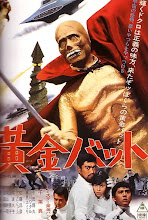Mapping Identity
Olive Whicher's Projective Geometry...
http://www.trans4mind.com/counterpoint/hughes.shtml
Parallel Universes
By Paul Hughes-Barlow
We all live in our own parallel universe.
Everyone sees you from a slightly different angle to everyone else.
Each angle is unique since each person occupies their own space.
Back in 1852 Bernhard Riemann created a new geometry that did away with the Euclidean geometry. Riemannian geometry is all about space, curved surfaces and multiple dimensions. But he was way ahead of his time and it's only recently that the significance of his insights have been realised.
In 1904, Einstein was working on his Special Theory of Relativity, but he had a problem. He did not have the mathematical formulae to make his theory work, and it was not until someone showed him Riemann's theorems that he had the answer. Space-time geometry is Riemannian. Einstein's theories held sway until until the beginning of the 1930s when Quantum Mechanics was king. Quantum Mechanics was so accurate that science thought it could answer the ultimate questions about the universe.
In 1988, Stephen Hawking in his 'A Brief History of Time' was able to dismiss theories that had multiple dimensions, but at the start of the 21st century, physicists are scrambling to learn Riemannian geometry as it is at the heart of Superstring Theory and M Theory. M Theory is the latest mathematical and geometrical model that not only unites the four forces of nature (Electromagnetism, Strong Force, Weak Force and Gravity), but allows physicists to see before the Big Bang 15 billion years ago. These theories postulate that we have an infinite number of parallel universes all slightly different.
I first came across the Hegelian Dialect, a concept over 2,000 years old, when I was researching the Golden Dawn Opening of the Key Tarot spread. The system of Elemental Dignities is based upon the Hegelian Dialect. The Hegelian Dialect looks at objects as either similar or different, thesis or antithesis, and then we can create the synthesis or relationship between the two. In Elemental Dignities, we see that Fire and Water are opposites, so they weaken each other, and create either Air or Earth. The Father and Mother unite to create the child, which is either a boy or a girl. Air and Earth are also opposites, and they cancel each other out. Fire and Air are active and friendly, while Water and Earth are passive and friendly. In other words, Elemental Dignities are a form of the Hegelian Dialect.
It is characteristic of all high spiritual vision that the formulation of any idea is immediately destroyed or cancelled out by the arising of the contradictory. So, we have the uniting energy of love separating chaos from order – it is a paradox. "Love is the Law, Love under Will" is an inspiration from this insight.
We are now in a position to understand what might be happening in a tarot reading. The parallel universe of the Tarot reader (thesis) and the parallel universe of the client (antithesis) meet at the synthesis of the tarot spread. Significantly, Crowley discusses the individual tarot cards has having their own universe.
Hegel did not invent the Dialect; he took the idea from the Kabbalah, in particular the Sepher Yetsirah, while 2,000 years ago the Greeks understood the concept. It is now time to reclaim a fundamental principal that drives not only the creation of our Universe but is the basis of the Tree of Life, the Golden Dawn teachings and the Tarot.
At the level of Wisdom (on the Kabbalah's Tree of Life), the duality is not present, so it is only on levels below Wisdom that people are separated into different individuals. Only on lower levels does the division between good and evil exist. According to Kaplan, "Wisdom is the pure mind force that transcends time. On the level of Wisdom, past, present and future have not yet been separated. Hence, on this level, one can see the future just like the past and present."
Further research has shown that Crowley was looking for a mathematical model of consciousness as early as 1900, but this has been obscured by his notoriety as magician. An early influence was the Theosophical Society founded by Mme Blavatsky. She quotes Hegel in terms of the Vedantic philosophy, and her own vision is of an infinite number of universes manifesting and disappearing using the Vedantic model. A follower of Theosophy, Rudolf Steiner, founded the Anthroposophical Society. Steiner was deeply influenced by geometry, and he developed the system of Projective Synthetic Geometry, the geometrical designs of which were incorporated into the Thoth Tarot under the tutelage of Olive Whicher. A colleague of Olive Whicher was George Adams who was a student of Bertrand Russell, philosopher and mathematician, who was a friend of Albert Einstein. Crowley quotes Russell in the Book of Thoth. In order to understand the ideas in the Book of Thoth, we have to study a vast range of sources in addition to the magical writings of Aleister Crowley.
Research with my colleague, Tim Rifat, suggests that Aleister Crowley hid a magical system using Riemannian and Projective Synthetic Geometry as a model of consciousness in the text and designs of the Thoth Tarot. This magical system was used by Crowley in a magical war against the Nazis in World War II. The first public unveiling of the Thoth Tarot cards in London, July 1st 1942 was at a pivotal moment in the war when the Allies began to have victories against Germany.
In a letter on July 5th 1942, Dion Fortune, magician and colleague of Aleister Crowley, wrote that now the War had been won on the Inner Planes, her attention was now turning to events after the war.



1 Comments:
I once asked a Jesuit priest what was the best short prayer he knew. He said, 'Fuck it,' as in 'Fuck it; it's in God's hands.
That was the comment I was supposed to have left DOH@ME.
Post a Comment
<< Home